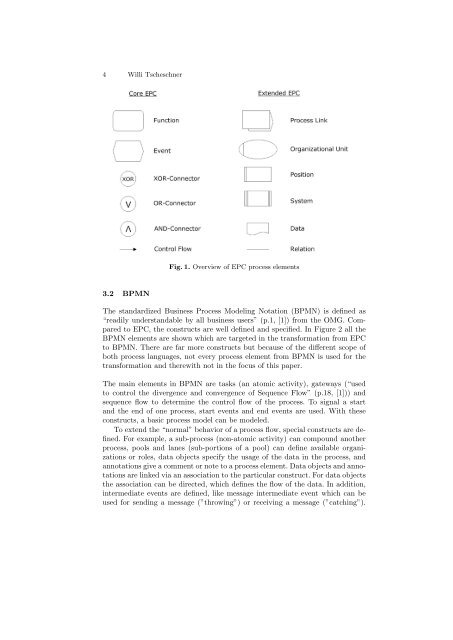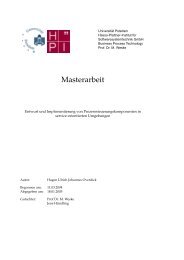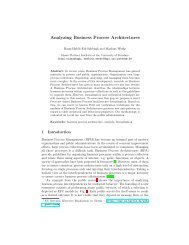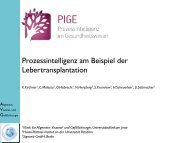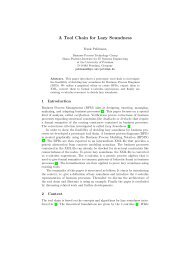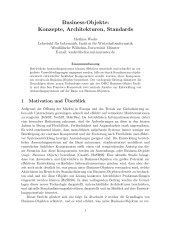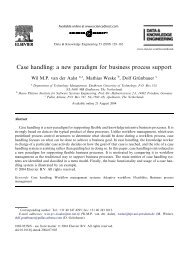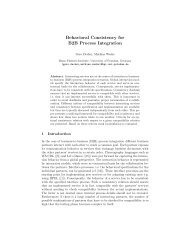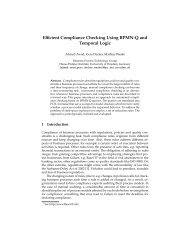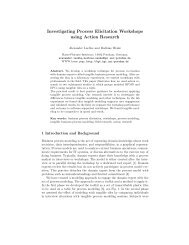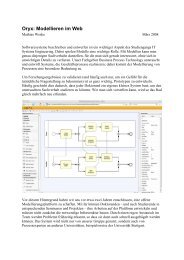Transformation from EPC to BPMN - Business Process Technology ...
Transformation from EPC to BPMN - Business Process Technology ...
Transformation from EPC to BPMN - Business Process Technology ...
You also want an ePaper? Increase the reach of your titles
YUMPU automatically turns print PDFs into web optimized ePapers that Google loves.
4 Willi Tscheschner<br />
3.2 <strong>BPMN</strong><br />
Fig. 1. Overview of <strong>EPC</strong> process elements<br />
The standardized <strong>Business</strong> <strong>Process</strong> Modeling Notation (<strong>BPMN</strong>) is defined as<br />
“readily understandable by all business users” (p.1, [1]) <strong>from</strong> the OMG. Compared<br />
<strong>to</strong> <strong>EPC</strong>, the constructs are well defined and specified. In Figure 2 all the<br />
<strong>BPMN</strong> elements are shown which are targeted in the transformation <strong>from</strong> <strong>EPC</strong><br />
<strong>to</strong> <strong>BPMN</strong>. There are far more constructs but because of the different scope of<br />
both process languages, not every process element <strong>from</strong> <strong>BPMN</strong> is used for the<br />
transformation and therewith not in the focus of this paper.<br />
The main elements in <strong>BPMN</strong> are tasks (an a<strong>to</strong>mic activity), gateways (“used<br />
<strong>to</strong> control the divergence and convergence of Sequence Flow” (p.18, [1])) and<br />
sequence flow <strong>to</strong> determine the control flow of the process. To signal a start<br />
and the end of one process, start events and end events are used. With these<br />
constructs, a basic process model can be modeled.<br />
To extend the “normal” behavior of a process flow, special constructs are defined.<br />
For example, a sub-process (non-a<strong>to</strong>mic activity) can compound another<br />
process, pools and lanes (sub-portions of a pool) can define available organizations<br />
or roles, data objects specify the usage of the data in the process, and<br />
annotations give a comment or note <strong>to</strong> a process element. Data objects and annotations<br />
are linked via an association <strong>to</strong> the particular construct. For data objects<br />
the association can be directed, which defines the flow of the data. In addition,<br />
intermediate events are defined, like message intermediate event which can be<br />
used for sending a message (”throwing”) or receiving a message (”catching”).


